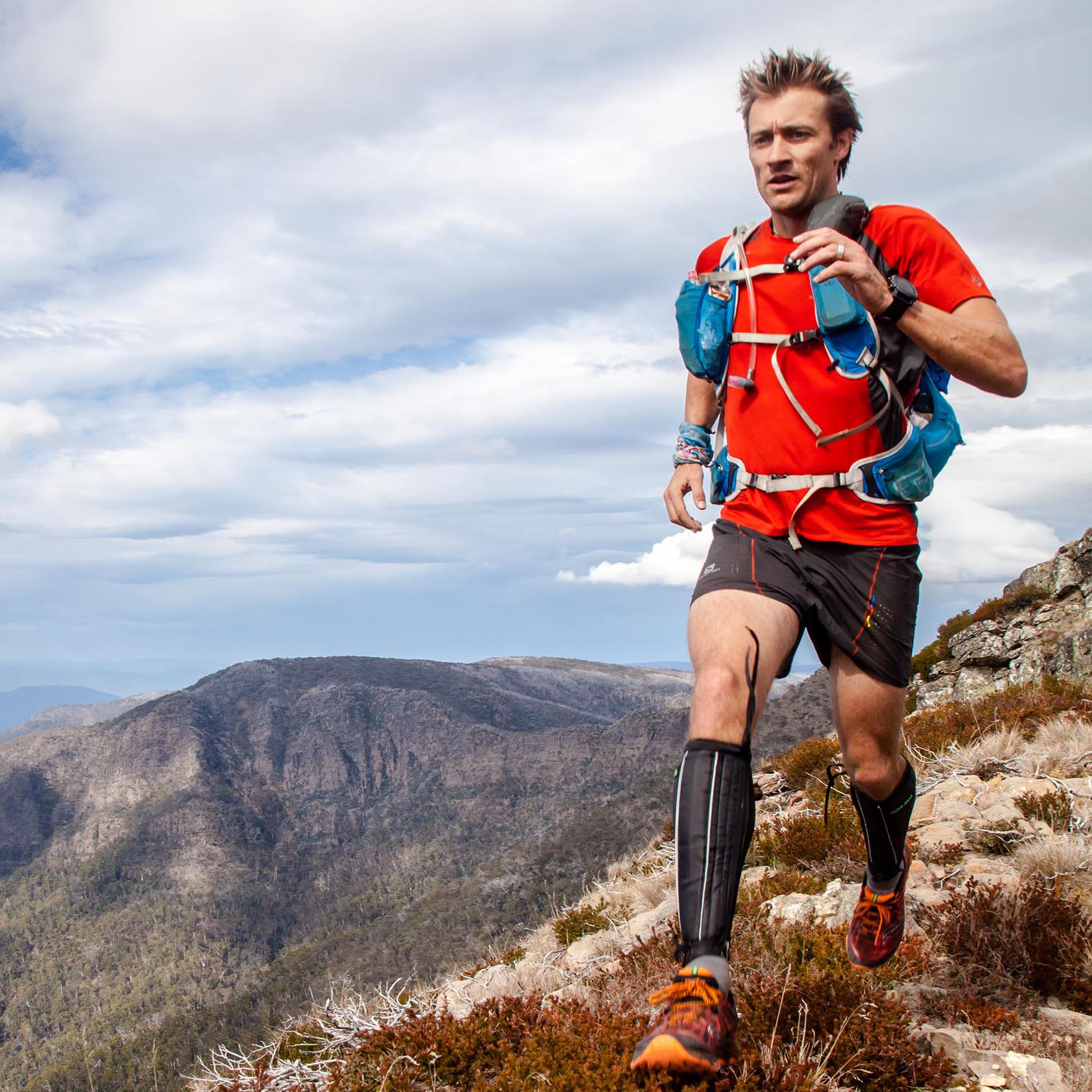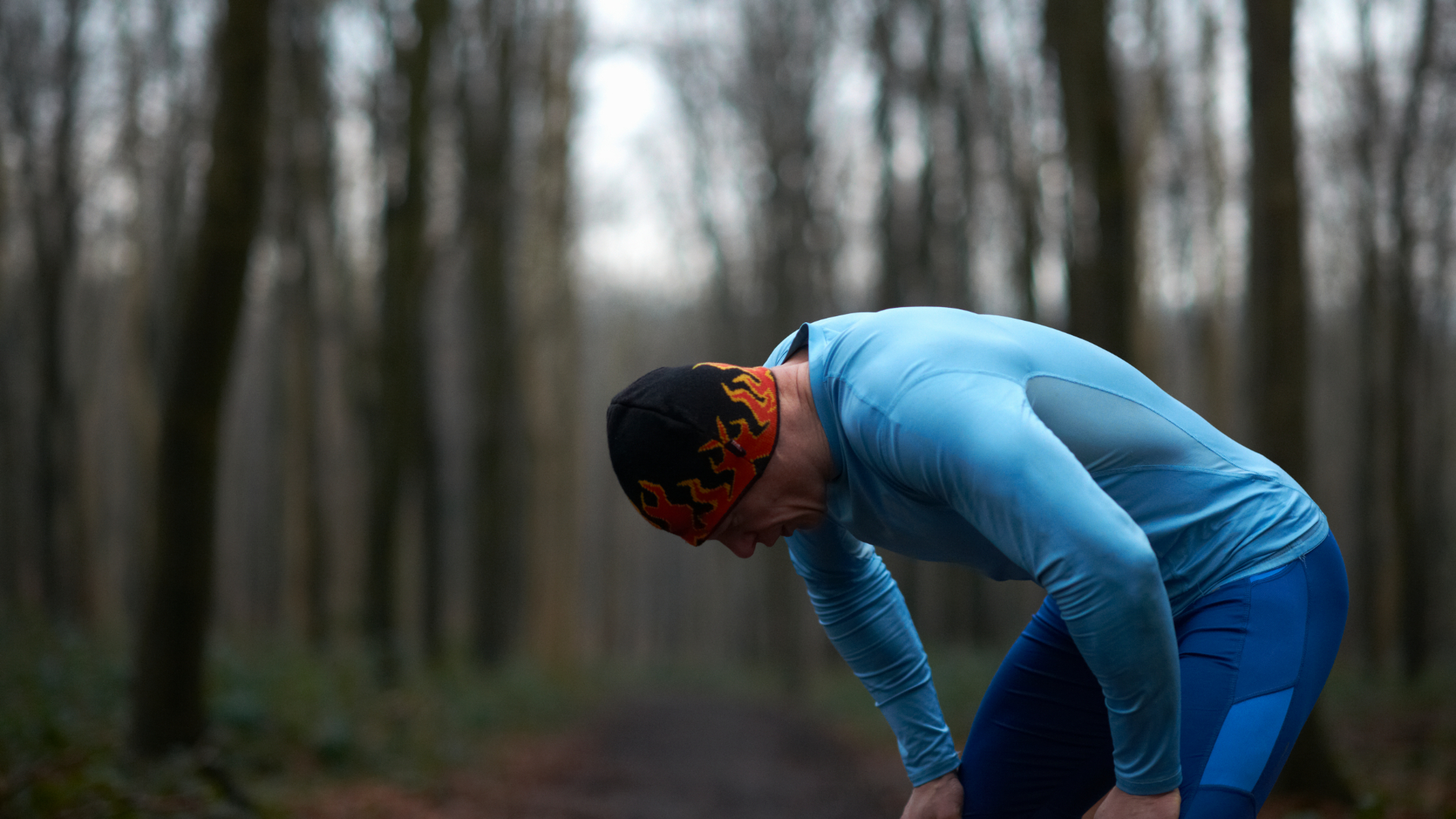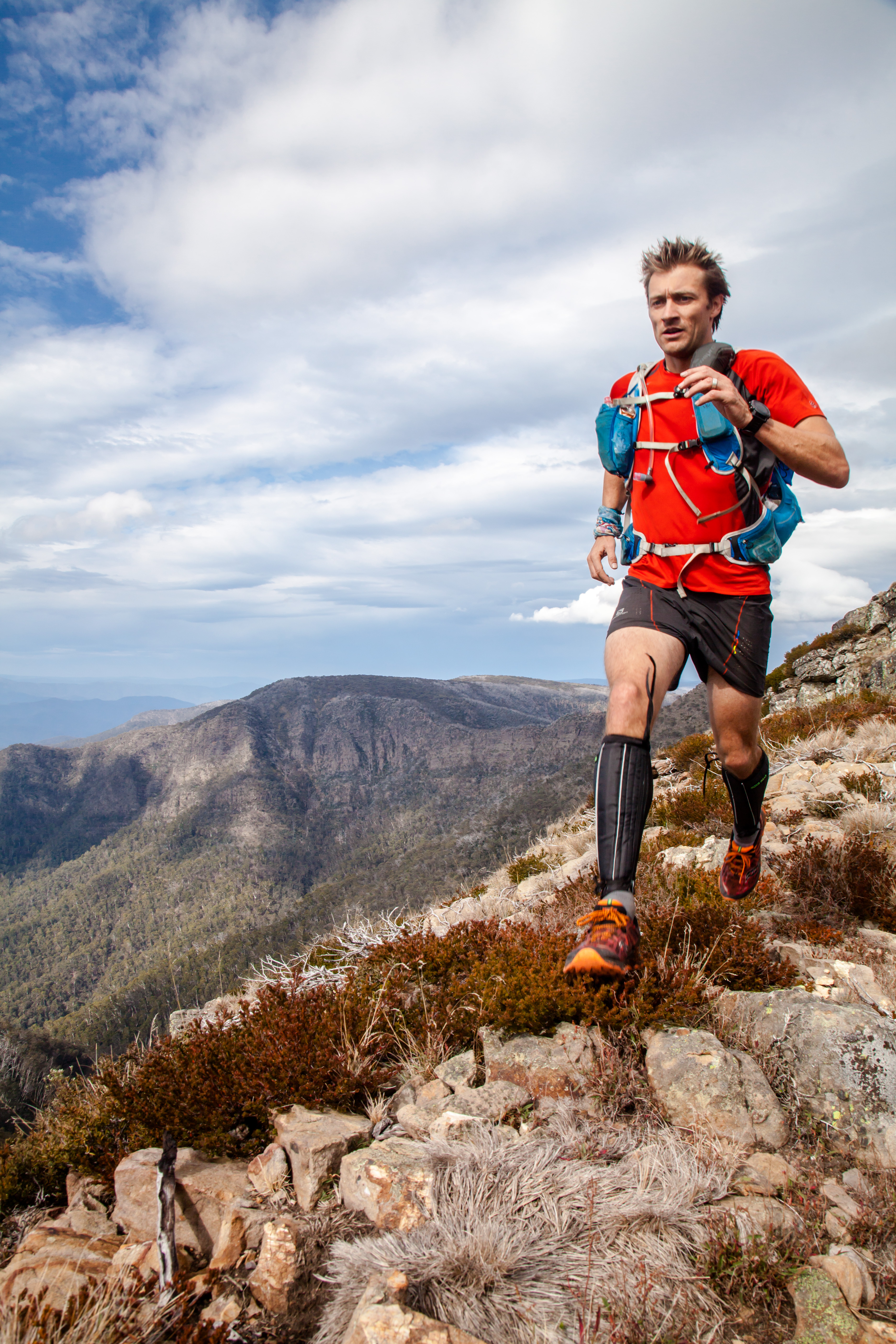How not to bonk – avoid that dreaded DNF
The art of endurance is to find that zone between maintaining forward momentum and avoiding hitting the infamous 'wall' – here are our expert tips on how not to bonk

If you're the kind of runner who likes to push yourself, or try to bite of distances or courses that are more than you can chew, there's a good chance you'll have bonked at some point or other. For Advnture.com contributors Alex and Chris, they both have their own stories to tell.
Alex had reached the first checkpoint on Scotland's classic Ring of Steall Skyrace, having decided to absolutely gun it along the Devil's Ridge and fly down the descent from Sgùrr a'Mhàim. After a quick fuel stop, he took a deep breath, ready to take on the "easy" flat section through Glen Nevis, only to find his legs would no longer run. This wasn't an ideal scenario, with a further three mountains and many, many miles between him and the finish line. He managed to make it, albeit very, very slowly.
As for Chris, his bonks were much more dramatic. Silly antics in his trail running shoes almost killed him. Twice. Worse than the spectre of death – it means he's DNFd. Twice. The horror, the horror. To which Apocalypse Now's Colonel Kurtz would have added: the humiliation.
He was once helicoptered off a 4,500-metre Himalayan mountain pass sputtering his way to oblivion with pulmonary oedema (noisily drowning in a lung full of his own bodily fluids). The other time was while running in a hellishly hot desert, his demise and resultant hospital dash courtesy of a tetany seizure – something akin to a cramp but multiplied by one thousand in force and applied to your entire body. Those who have been sat on by an elephant will understand.
Chris' philosophy on all of this is that, if you’re going to record a DNF (Did Not Finish), you may as well do it with a little drama, if absolutely zero style. (Although it was a pretty cool chopper ride.) Here, he gives his top five 'how not to bonk' tips to avoid that one-way ticket to Quitsville.
Meet the experts

Former editor of Walk (UK) and Outer Edge (Australia), Chris mostly knows what he's doing. Apart from that time he was helicoptered out of the Bhutanese Himalayas. Or evacuated from the Australian desert to hospital during a DIY ultrarunning challenge. Or... well, let's say he tests his gear with gusto.

Not long into his apprenticeship with the mountains, Alex realised he could combine his love of running with his love of the high places. He's no elite by any stretch of the imagination, very much a 'happy in the middle of the pack and enjoying the scenery' kind of guy. He bonked massively during the 2021 Ring of Steall Skyrace in the Scottish Highlands, but lived to tell the tale.
Today's best deals
What is bonking?

- Bonking is when the body has used up its glycogen fuel stores and begins to struggle
- There's also the blood-glucose bonk, which impacts the runner's willpower
Bonking is when your body has used up all of its glycogen and starts burning fat as its energy source. The legs get heavy, the body feels depleted and your brain starts to wonder why you've chosen to put yourself through this in your free time. Marathon runners often cite (and fear) 'the Wall', which usually occurs around the 18- to 20-mile mark. However, bonking can happen at various times and for various reasons.
There are broadly two types of bonk, muscle-glycogen bonk, which is the type most people will be familiar with as the one described above. There's also the blood-glucose bonk, which has an impact on the runner mentally, sapping their willpower.
All the latest inspiration, tips and guides to help you plan your next Advnture!
1. Listen to the body
- Listen to your body and don't be afraid to stop to tend to it
- If you've got a niggling injury, rest and skip sessions until it recovers

All runners do it. Ignore the signals, that is. Signals that tell us (usually in a very loud voice) ‘something’s wrong’. That hot spot on the heel that doesn’t hurt but is starting to whine at you a little. That little tightness in the calf that isn’t making you limp but is starting to argue with continued motion. All sure signs that perhaps you should rethink that ultra miler on the weekend.
This one’s all about overcoming ego and being in tune with your body, rather than taking a stubbornly contrarian stance with it.
That hot spot mid run? If you want to keep going, stop, take the few minutes required to bandage it – those precious seconds you’re worried about losing will, we promise, be the difference between recording a finish time and not.
In training, make sure you respond to any niggles straight away – even if that means resting and missing sessions. Learn to battle the guilt of not doing those extra training miles, rather than battling with a torn meniscus. Only one of those will stop you in your tracks, risking a DNS (Did Not Start) as much as a DNF.
Any seasoned ultra runner will tell you: better to go into a long run underdone and uninjured, than go in having ticked your training diary off with OCD-fuelled dedication at the cost of a limp that puts Quasimodo to shame. The former will have you finishing – if a little slower and more tired – the latter will have you pulling pins and shouting bad things at the very first aid station.
2. Train, idiot. Somewhere appropriate
- The best way to train for an event is to run similar distances and terrain types in training
- Try to match your training to the climatic conditions you'll be running in too

Straightforward this one: you need to train in order to habituate your body and your mind for the challenges ahead. The quickest way to a DNF is to think you can headbutt your way through that mountain range. This is not the WWE. You are not Hulk Hogan. Putting in the pre-event work and conditioning the body appropriately is the basic foundation of finishing and not failing. In fact, it’s also the frame, roof, walls and insulation, if we are to harp on the building analogy.
Here’s the nuance, however: you need to train, at least to some degree, as you will race. Not just in terms of pace or pure distance, but in terms of the type of terrain you will contend with during your endurance mission. If it’s going to be rugged, get used to rugged. Equally if it’s going to be flat, bitumen and boring, get used to that in training. This is as much for the body (different terrain taxes different muscles, requires different body mechanics and, indeed, different skills, such as downhill running), as for the mind.
Running the Badwater Ultra? You better be ready for boredom and suffocating heat. Like 130°F (54°C). So, go run in the heat. For a long time. In terrain that never changes (the below sea level part probably doesn’t matter so much). This is equally pertinent for cold-weather events (minus 49°F or minus 45°C Yukon Arctic Ultra, anyone?). Yep, go set up a treadmill in that coolroom, if that’s what it takes. And no, a few runs on a coolish day in Florida does not count as habituation for an ice marathon.
3. Think about your guts
- Gut issues are a major factor in why people end up with a DNF
- Practise your nutrition during runs in training so there are no surprises come race day
- Don't introduce anything new to your stomach during a big race
- Eat plenty of carbohydrates the day before a big run

Following on from the ‘train as you’ll race’ notion, pay extra attention – especially in endurance efforts where you will be performing for long durations and bonking is commonplace – to your nutrition. One major factor (apart from not enough training or injury) that causes DNF in ultras, is gut issues.
Sometimes, that’s just the luck of the day’s diarrhoea draw (or supping from an unknown water source), but other times it’s because someone decides to eat or drink supplements or food that they have never consumed prior to race day (beware the freebies in your event day race pack).
Stomachs are under significant duress during fatigue. The last thing your gut wants or needs is a surprise slice of pepperoni pizza shoved in at the marathon mark, when it’s used to gels and energy bars. Or, if you’re like me, vice versa. Knowing what to eat while running is one step towards bossing it.
It’s not always as dramatic as an explosion of vomit and dysentery that stops endurance athletes in their tracks. Sometimes it’s just not enough fuel going in at the right point in time, leaving your energy tank empty at critical moments. Many will advise runners to eat small portions from early during long efforts, meaning you are ‘stacking’ your reserves in advance of your stomach potentially getting to a point where it rejects anything incoming. But this is a very personal thing: I can eat a plate of curry midway through an ultra. In fact, I need to. Others stick with gels. Which don’t come in curry flavour, so I’m out.
So, make sure that you commit all your nutrition mistakes (and find out what works) in training rather than on race day. Figure out what your stomach will happily cope with when under endurance stress and stick to that. Also, experiment in training with how much fuel you need to (and can) take in, in order to deliver enough long-term energy to your hard working muscles. When it comes to what to eat before running, eating plenty of carbohydrates the day before a big race will top up your body's glycogen stores.
In general, there’s no such thing as bad luck when it comes to race day nutrition. All your mistakes should have been made in training, and your chosen balance of food and liquid intake should be a familiar and comforting thing for your stomach.
4. Rest, recover, improve
- Rest properly between sessions to ensure you don't overload the body
- Hydrate and eat after finishing a run to help the body recover
- Take time to socialize and pursue your other passions while recovering

Recovery is key to surviving endurance sports. The better your recovery, the better your body repairs, the less likely you are to get injured or fall to exhaustion. Indeed, the better our recovery, the more we can actually train, and the more benefit we will receive from our training. It’s a self-feeding loop of positivity.
Primarily we’re talking about recovery in terms of training here – ensuring we rest adequately between training sessions and that we don’t overload. We’re also thinking of recovery post events: don’t jump too soon from one max-effort race into another ultra without allowing your body to overcome the impact of a red-line effort. You want to toe the start line with a full tank and the only way to do that is to ensure you recover properly through consistently good sleep; matched with a nutritious diet that meets your individual mineral, vitamin, protein and fat needs.
You should rehydrate immediately after a run and eat a healthy snack within half an hour and a meal (depending on the length of your run) within two hours of finishing any training session to give your body the resources it needs to get to work on the recovery. Knowing what to eat after a run helps and, once again, carbohydrates are your friend.
Also, allow for mental rest – meditation, breathing exercises, socialising, and engaging in activities and passions other than your endurance sport. All of these will set you up well for keeping the DNF demon at bay.
Here’s the other side of the recovery coin: it applies during the event, too. If you’re muscling through a multiday run, then all of the above (sleep, nutrition, mental relaxation) will be critical to your performance. But even in non-stop efforts – even shorter pushes – the ability to know when to ease the throttle back, if just for a short window of respite, is key to not colliding into that notorious ‘wall’ or stepping into the hurt locker and throwing away the key.
For the A-types out there (driven, OCD, perfectionists), this one is hard. Overtraining, and a foot-on-the-effort-accelerator that is stuck on max revs is the flame to their DNF bogeyman. For those B-types (not an official designation, but B comes after A) – like me – well, we just have to watch overdoing the R&R, like the A-types overdo tempo sessions. It’s a delicate balance, well worth consciously navigating for all endurance athletes.
5. Sometimes it's about mind games
- Being mentally conditioned for all eventualities helps on a long run
- Decide before the race what the rational reasons would be to quit
- If, during the race, the reason you're thinking of quitting isn't on the checklist, continue
- Take a break, if necessary, take on some water and eat, and go again

All these tips so far have mostly been about the body, but failings of the mind can lead to just as many DNFs. Sometimes it’s because – as alluded to in #4 – we haven’t gotten our head around when to make a sensible decision to ease back. We make the wrong ego-driven call, keep pushing, too hard, too early and there we find ourselves – screaming in pain and tears of self-recrimination at the aid station, punching the ground like a three-year old throwing a tantrum at kindergarten. (Or is that just me?)
Other times we pull the pin too early – our mind telling us stories that the show is over, the curtains have been pulled – even though it’s really just intermission and we shouldn’t be leaving the theatre of nature just yet. No injury. No gut problem. Just – meh – not feeling it. And we start mentally filing all those reasons as to why it’s justifiable to cop the DNF. My stomach is a little off (so maybe I might vomit down the track). Something’s going on in my quad – maybe my thigh bone is broken. My toenail is annoying me – what if I lose it? My plants need watering now, not tomorrow. They’ve just released a new series of my favourite show on Netflix. Little things become big things, become showstoppers.
Apart from mentally conditioning yourself, as already advised, here we suggest that you predetermine what your boundaries are going into an event or effort. For what reasons do you think - when still in a rational state of mind - you’d call it quits? If it gets close to those points mid-race, return to your checklist and compare: is the reason you’re quitting noted on that pre-ordained checklist? No? Keep on chuffing on, then, knowing it’s just the insanity of the endurance-deluded mind making you question your motivation in the moment.
Also, take a moment – as in the rest and recover tip – at an aid station to stop, and reassess. Eat something. Coming in you may be all about signing off. But often, after a little TLC from the aid crew, and realising that none of your reasons for quitting are on your ‘only quit if…’ checklist – you might just take that step back on course, breaking down the big effort ahead into small efforts, knowing the endurance elephant can only ever be eaten in bite sized pieces.
A few more quick 'How not to bonk' tips...

Watch the clock – sure, keep ahead of the clock, because if you fall behind published cut-off times, you’ll DNF anyway. But have a pace plan and stick to it. Don’t try to find time gaps early on, otherwise you risk cooking yourself, and that’s a sure-fire recipe for Bonk Pie.
Read the race briefing – race directors don’t prepare them for their own bedtime reading jollies. They contain critical information, and if you don’t shelve that intel in your brain, you’ll make avoidable mistakes, and all too often DNF disasters.
Stick to your plan – prior planning prevents p*ss poor performance. The Six Ps is a cliché but also a golden rule. Have a plan and try sticking to it, especially early on.
Be flexible – okay, so that goes against the previous tip. But plans never go to plan (even though we’ve just said you 100% need one). Especially in the latter stages of a wilderness race. So be flexible and, ideally, have a Plan B, and C, as a contingency. And because endurance sports go for a long time, have a plan D somewhere too. One that doesn’t involve capitulating to a DNF.
But remember this: failure, even in the form of a DNF, is just another step towards success so as long as you take the lessons with you and change something of your approach moving forward. If you change nothing and then make the same mistakes and DNF again for the same reason, well, more fool you.
Author’s note: subscribing to my own advice, I have never again run up big mountains too fast (the cause of altitude sickness and resultant pulmonary oedema) nor have I again run in a desert at a time when the earth is shimmering under my feet. Yet I have since run sensibly in both environments and finished. Sense and Sensibility may be an awfully boring film, but as a motto, it works on the long run.
Australia-based Chris mastered his outdoor gear reviewing technique as an editor of outdoor and adventure magazines, including Walk (UK), Outer Edge and Trail Run Mag (Australia), and as a contributor to the likes of Australian Geographic Outdoor, Wild, Adventure NZ, and Lonely Planet adventure titles. He mostly knows what he's doing. Apart from that time he was helicoptered out of the Bhutanese Himalayas. Or evacuated from the Australian desert to hospital. Or... well, let's say he tests his gear with gusto.

